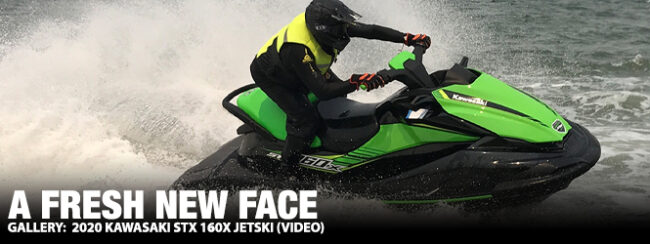
Kawasaki’s entry model JetSki has had its first major overhaul since the STX-15F went on sale in 2004 – and we’ve finally ridden it. It’s now called the STX 160 and in the North American market, comes in three model grades: STX 160, STX 160X and STX 160LX.
In Australia, where this model was tested, it comes in two model grades: the STX 160X shown here and the flagship STX 160LX, which gains more pronounced tiered seating and Kawasaki’s Jetsound audio system. Pricing in the US starts from $9,599 (STX 160), $9,999 (STX 160X) and $11,699 (STX 160LX), not including trailer, registration and taxes. Pricing in Australia starts from $14,999 (STX160X), which is $2,000 more than the STX-15F it replaces, and $16,799 (STX 160LX) including tax but not including trailer and registration.
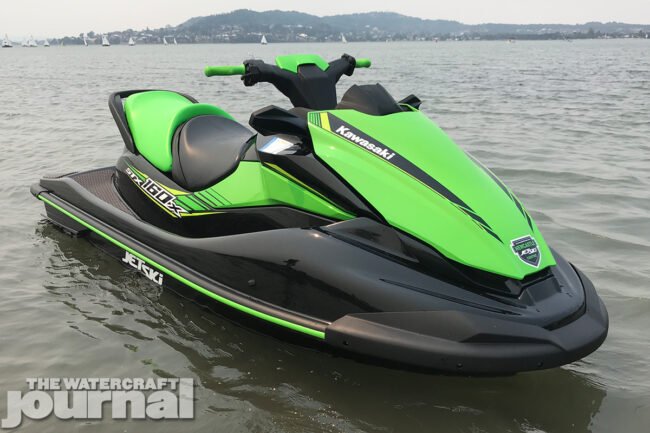
Above: New angles and sharp creases replace the smooth lines of the outgoing STX-15F. While the top deck is entirely new, providing increased storage, improved ergonomics and new operating features – nearly everything below the bondline remains unchanged since 2004.
But first things first: For those who were wondering, the Kawasaki’s 1.5-litre naturally-aspirated four-cylinder engine, hull, ride plate, intake grate, and sponsons remain unchanged from the STX-15F; however the top deck of the STX 160 is completely new for added comfort and convenience and is a big improvement over its predecessor. It now has a slightly taller riding position with more knee room and wider, tapered handlebars for a more natural seating posture.
The redesign has given the Kawasaki a massive increase in cargo space as well, from 23.5-gallons (89 litres) to a total of 35.3-gallons (134 litres) – including 30-gallons (114 litres) in the nose, 4.5-gallons (16.7 litres) under the back seat (although without a secure lid, as per Yamaha), a half-gallon (2.3 litre) wet storage area near the rear deck, and a slim waterproof 1.4-litre storage pocket near the centre console that can stow a phone and is available with an optional USB charger.
Above left: Kawasaki did away with the gas strut keeping the hood open, and went with an unsprung locking arm similar to the VX Series Yamahas. Above right: The underseat storage beneath the rear passenger is large and even has an arm to keep the new hinged rear seat from falling down while accessing the compartment.
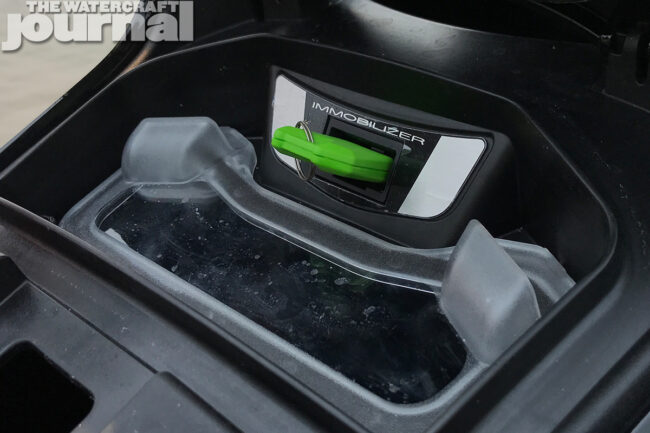
Above: The redesigned glove box relocates the capacity for two water bottles to forward of the handlebars, choosing to reduce the box itself and cap it with a hinged cover to keep water from damaging cell phones or small action cameras.
The under-seat storage area does not have a lid on it (as per the Yamaha WaveRunners) but the seat keeps most of the water out. Plus, once the seat is off, it’s easier to get your hands into the Kawasaki’s storage pocket versus the Yamaha which requires you to thread your hand through a round hole, limiting the size of what you can store in there.
There is a new, larger digital dash display with a fuel gauge meter, real-time fuel consumption, and a clock. Adjustable cruise control and a “no wake” mode (which caps speed at 5mph 0r 8kmh, and is a common feature on top tier Yamaha and Sea-Doo models) are now part of the package for the first time on Kawasaki’s entry model. The STX 160 also has a new, shorter and lighter throttle lever.
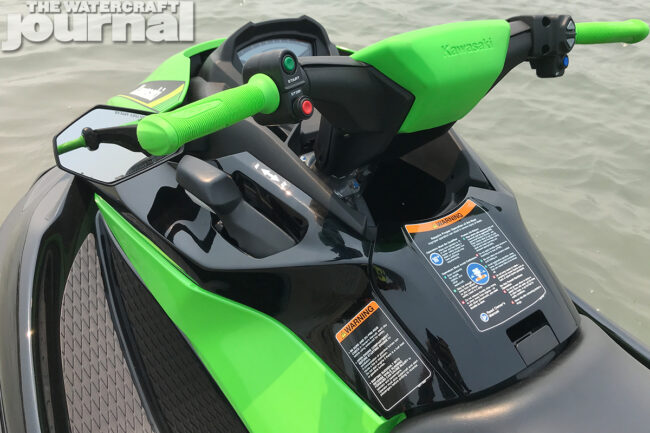
Above: Disappointing to some was the reveal that Kawasaki has yet to join Sea-Doo and Yamaha in the 21st century with handlebar-mounted brakes, opting instead to relocate the reverse lever from the right hand side of the deck to the left.
Above left: The STX 160X shares the same hull, ride plate, intake grate and 148mm jet pump as the previous STX-15F. Above right: Some will notice that the standard STX 160X steering neck is very similar to that of the 310R.
However, despite the redesign, reverse is still activated by a large handle on the center console, rather than a lever on the left handlebar as per Sea-Doo and Yamaha. Kawasaki has moved it to the left side of the craft and, as with the Ultra platform, it pulls up much like a handbrake in a car.
Unfortunately, Kawasaki doesn’t seem to be in a hurry to shift the reverse lever to the left handlebar – and given the long lifecycle of these craft Kawasaki fans could be waiting a long time. Having enjoyed the low speed maneuverability of Sea-Doo and Yamaha craft with forward and reverse levers on the handlebars, it’s easy to feel that Kawasaki owners are missing out on a convenient feature, which is especially handy when lining up to ride onto a trailer, or pulling up to a dock.

Above: Fore of the non-adjustable handlebars is a redesigned LCD screen reading off the vitals. An “eco” icon flashes on the screen when the JetSki is operated within the parameters for ideal fuel economy.
Other improvements include the fuel filler cap being relocated from the nose of the craft where it was exposed to water, now neatly tucked away and mounted up high underneath the hood cover. Fuel tank capacity has increased from 16.2-gallons (62 litres) to 20.6-gallons (78 litres), giving the STX 160 the same size tank as the flagship high performance Kawasaki 310 Ultra – the biggest tank among its rivals and one of the longest driving ranges between refills in the industry.
To really get the most out of the fuel tank, an “eco” symbol is displayed in the dash when you’re riding with an optimal throttle position and speed. The engine itself is carried over from before. It’s the same non-supercharged four-stroke engine (10.6:1 compression ratio, 83mm x 69.2mm bore and stroke) that is also used as the basis for the supercharged Ultra 310 models.
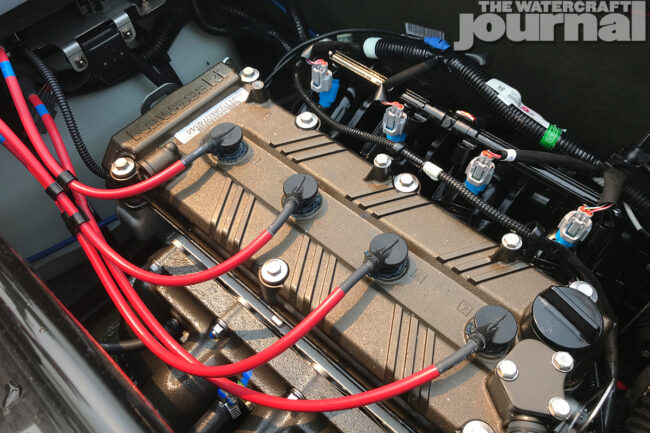
Above: The solitary change made to the 1.5L 4-stroke powerplant is the incorporation of Kawasaki’s fly-by-wire engine management system (KTRC), identical to that used by the 310-horsepower Ultras.
But for 2020, the 1,498cc four-cylinder now operates via a modern fly-by-wire throttle control system, permitting the use of the aforementioned cruise control, no wake, and eco functions. It has the same outputs as before (160hp and 152Nm at 7500rpm) however it remains one of the most powerful engines in this price range.
For those who want to ease their way into it, as with the previous model the STX 160 is available with a SLO key (slow learning operation mode) which limits the engine to 5,800rpm, trimming about 30 percent off its peak performance. The new Kawasaki’s curb weight – meaning loaded with fuel and oil – has increased from 844-pounds (383kg) for the previous the STX-15F to 877-pounds (398kg) for the new STX 160.
Above left: The most prominent change to the STX is the completely redesigned – and expanded – rear swim deck. The deck is lower, wider and shows a narrow folding swimstep that tucks in nicely into the rear bondrail. Above right: The rearward grab handle also has a lower handle ideal for reboarding.
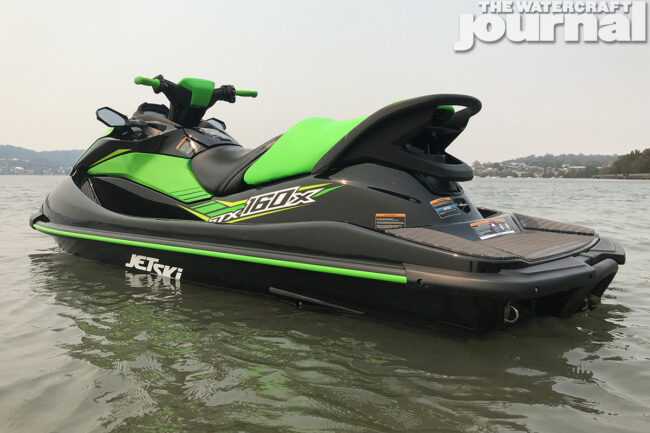
Above: Many will note that this Australian STX 160X is in Kawasaki Green and Ebony Black, when all STX 160X models sold in North America are offered in Ebony and Riptide Turquoise. The coloring is the only difference between the domestic and international models.
There is no handlebar adjustment and no trim adjustment on this craft (the same as the STX-15F) but it’s still easy to find a comfortable riding position. The instruments are straightforward and easy to use, and the extra storage space – including a small waterproof compartment for a phone, wallet or car keys – is a massive plus.
As with most watercraft (especially in this price range) the speedometer uses a paddle wheel on the ride plate (rather than GPS the on top-end Sea-Doos, a paddle wheel on certain Yamahas, or RPM on the latest Yamaha FX series, which is in the next class up). So the speedo is not 100 percent accurate (just like all watercraft with paddle wheels) but it’s good enough to keep you out of trouble in slow speed zones. Cruise control and a no-wake mode also help you stay within the law.

The 1.5-litre engine, also unchanged, is smooth and responsive and, we suspect, economical. We didn’t get a chance to run it empty, but that would have taken a decent amount of time now that the tank has 20-plus-gallons (78-litres) of capacity. Most rivals have 15-and-a-half or 18-gallon (60 or 70 liters) tanks (or less) in this price range.
On the water, it’s easy to see why Kawasaki hasn’t changed the hull design, including how it’s made: hand-laid fiberglass and gel coat in an era of slightly less durable lightweight materials. If it ain’t broke, don’t fix it, we say. Dimensionally, the new STX 160X isn’t too far off from the outgoing 15F; both models share identical widths (46.5.-inches), but the new 160X now reaches 124.1-inches in length, roughly one-and-a-half inches longer than the 15F’s 122.8. It’s also considerably taller, totaling 45.4-inches compared to the previous 41.3-inches height.
The Kawasaki STX 160X is an extremely fun and easy craft to ride. It’s both intuitive for first-timers but has the response and agility for experienced riders to really throw the thing around. It’s one of the most impressive hulls in this price range, which presumably explains why Kawasaki didn’t touch it. That also means that the new STX still peaks at a little over 60mph, particularly given the added weight.
Gratefully, it still cuts through medium chop with ease. And although Kawasaki has raised the seating position, it still feels like you sit quite low and close to the water line. We suspect this is why it turns so easily and accurately, as it has a lot of hull in the water and the center of gravity feels lower than most other watercraft. Overall, we had a blast on the new 2020 Kawasaki STX 160X. We really think it’s a handlebar reverse lever away from being the perfect budget-priced, fun-sized watercraft.
Special thanks goes to Newcastle Jet Ski Centre who were kind enough to let us beat on this brand new unit as much as we did.



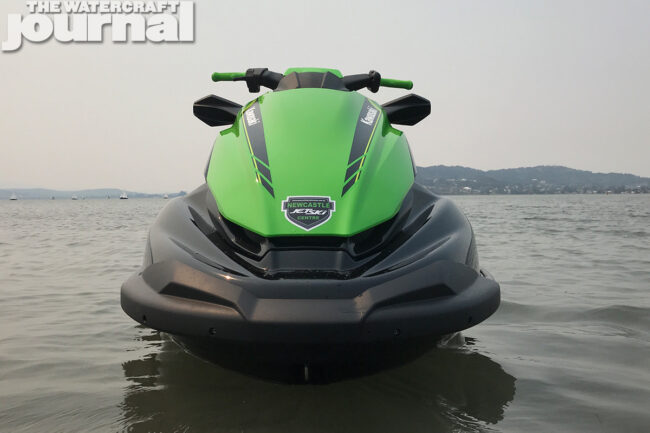
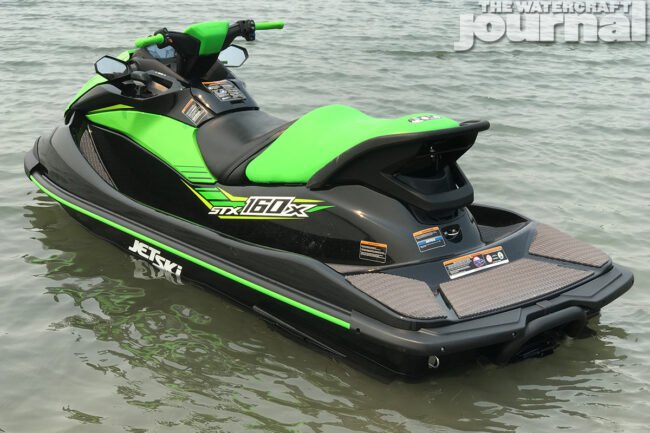
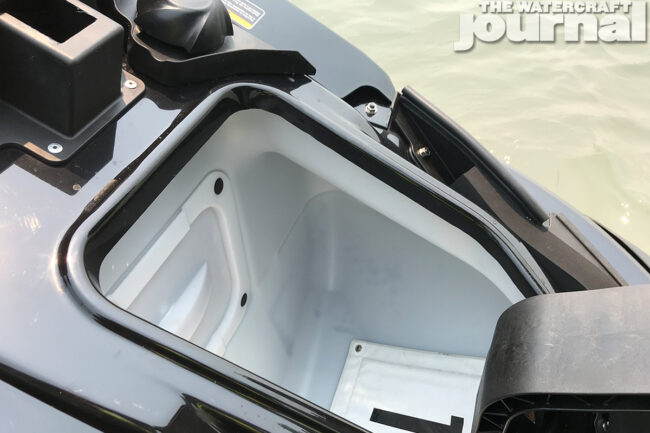
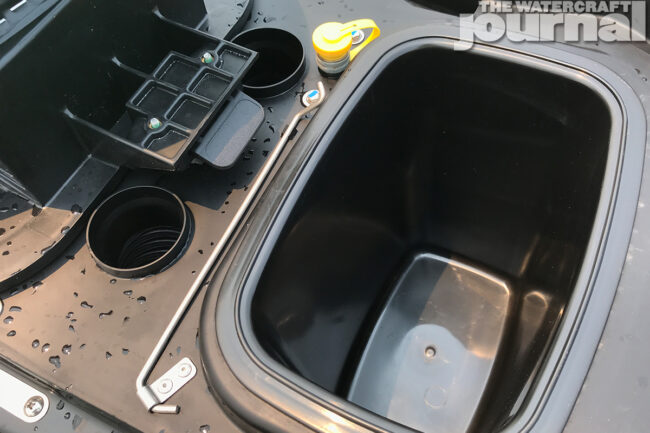
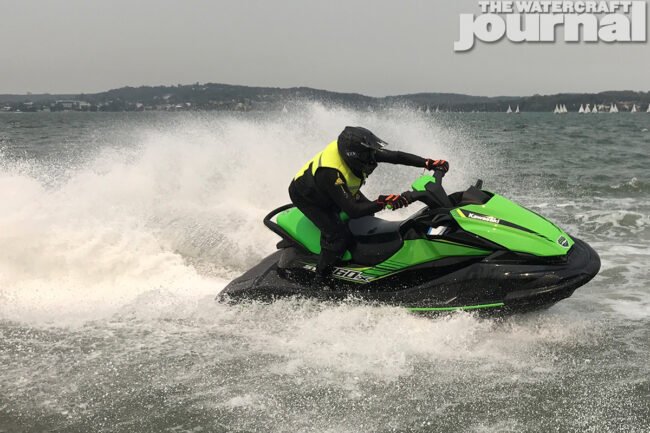
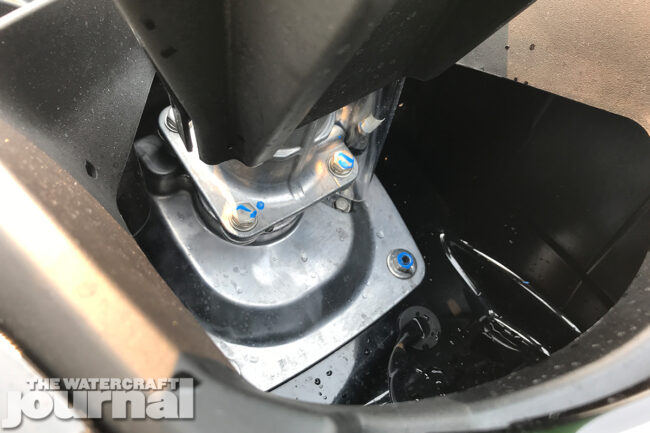
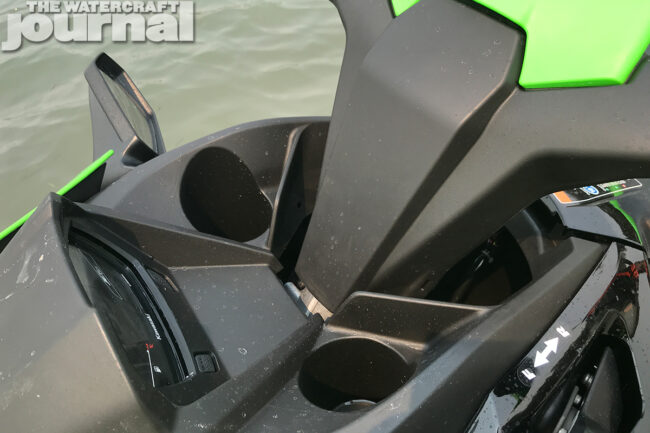
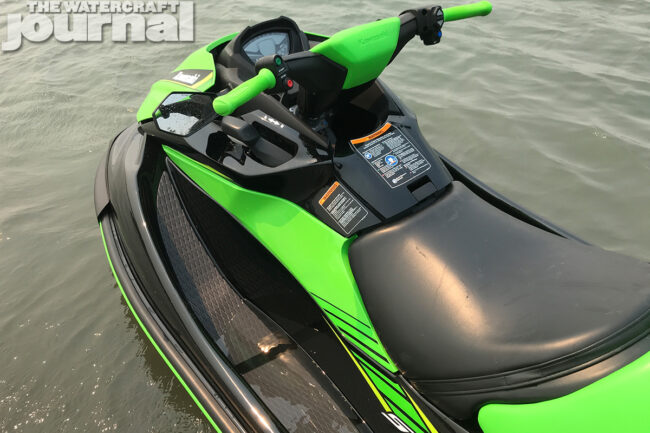
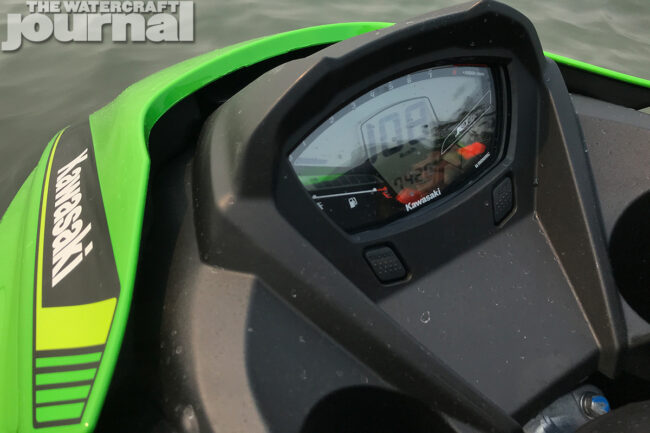
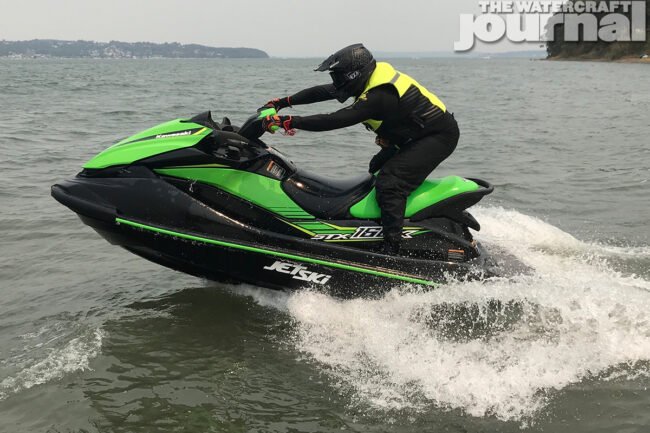
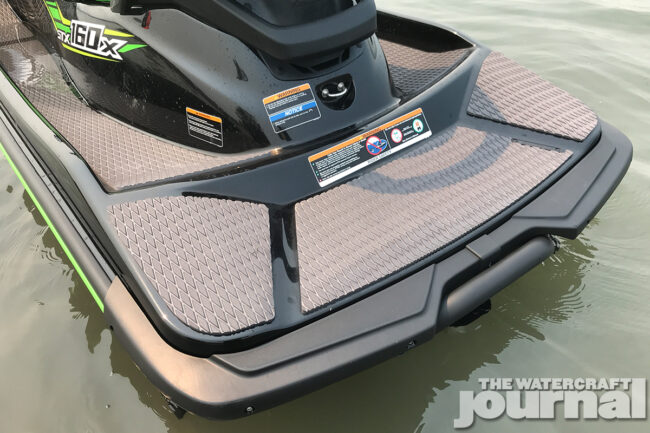
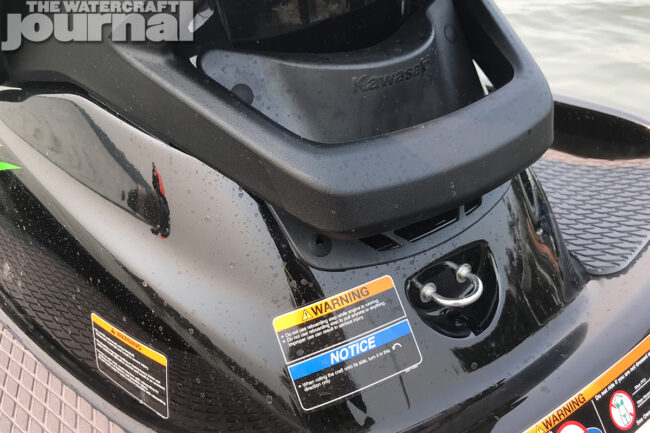
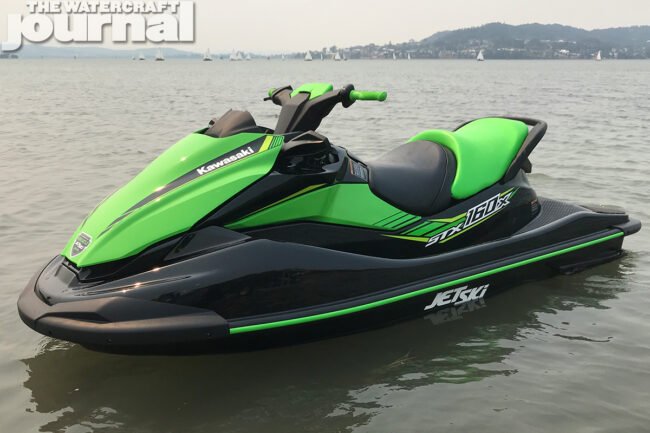
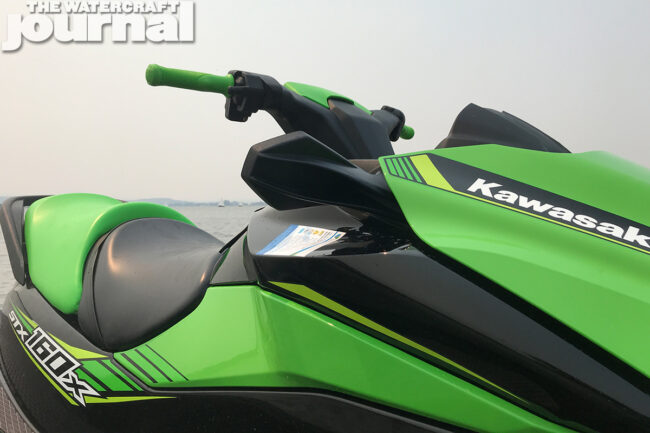

























[…] Read The Watercraft Journal’s exclusive full-length review of the 2020 Kawasaki STX 160X JetSki here: https://watercraftjournal.com/a-fresh-new-face-2020-kawasaki-stx-160x-jetski-video/ […]
[…] https://watercraftjournal.com/a-fresh-new-face-2020-kawasaki-stx-160x-jetski-video/ https://www.tfloffroad.com/2020/02/2020-kawasaki-jet-ski-stx-160-review-best-value-on-the-water/ […]
[…] the mid-level STX – the 160X – came in a very fun Ebony and Riptide Turquoise in 2020; internationally, the STX 160X came only in Ebony and Lime Green, and includes Cruise Control and No Wake settings. The top-of-the-segment STX 160LX ups the ante […]
Aug 20, 2020 Front hood not secured properly, hood blow off fill ski with water. No fix yet am told their working on it!
We just replaced ours but with stock parts, not anything revised yet unfortunately. Kspeed is working on a reinforcement bracket due to show up soon.